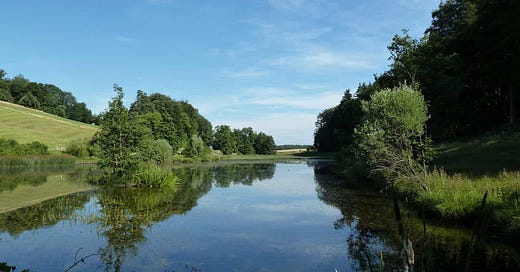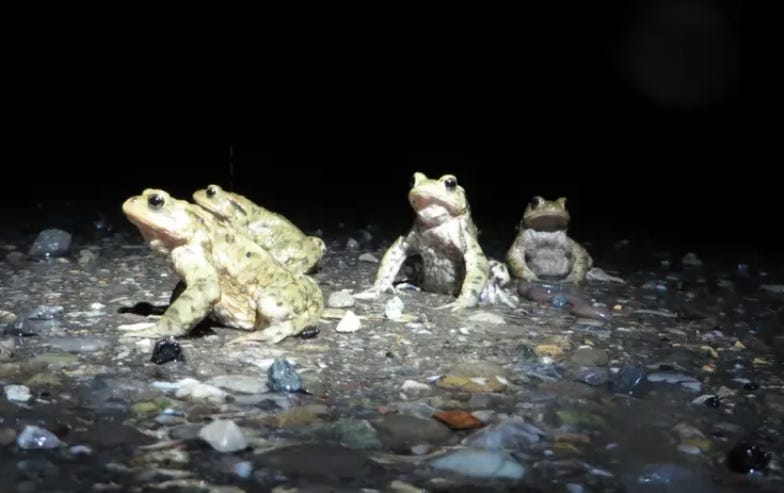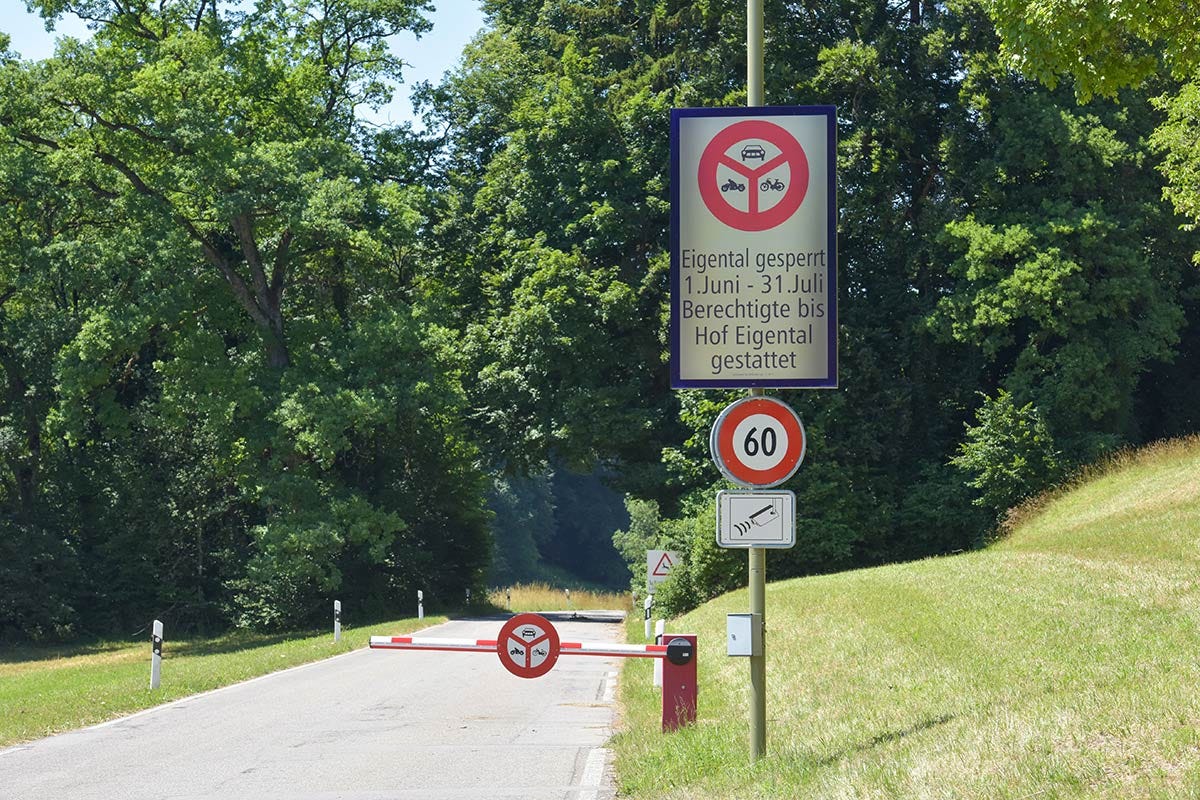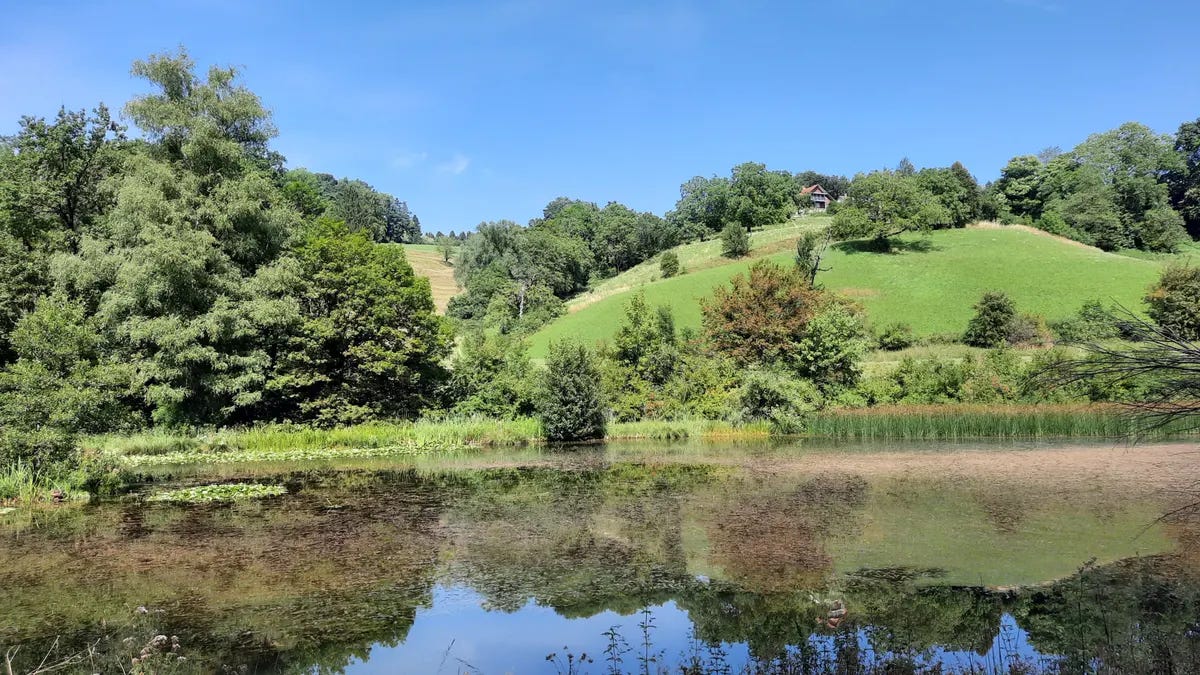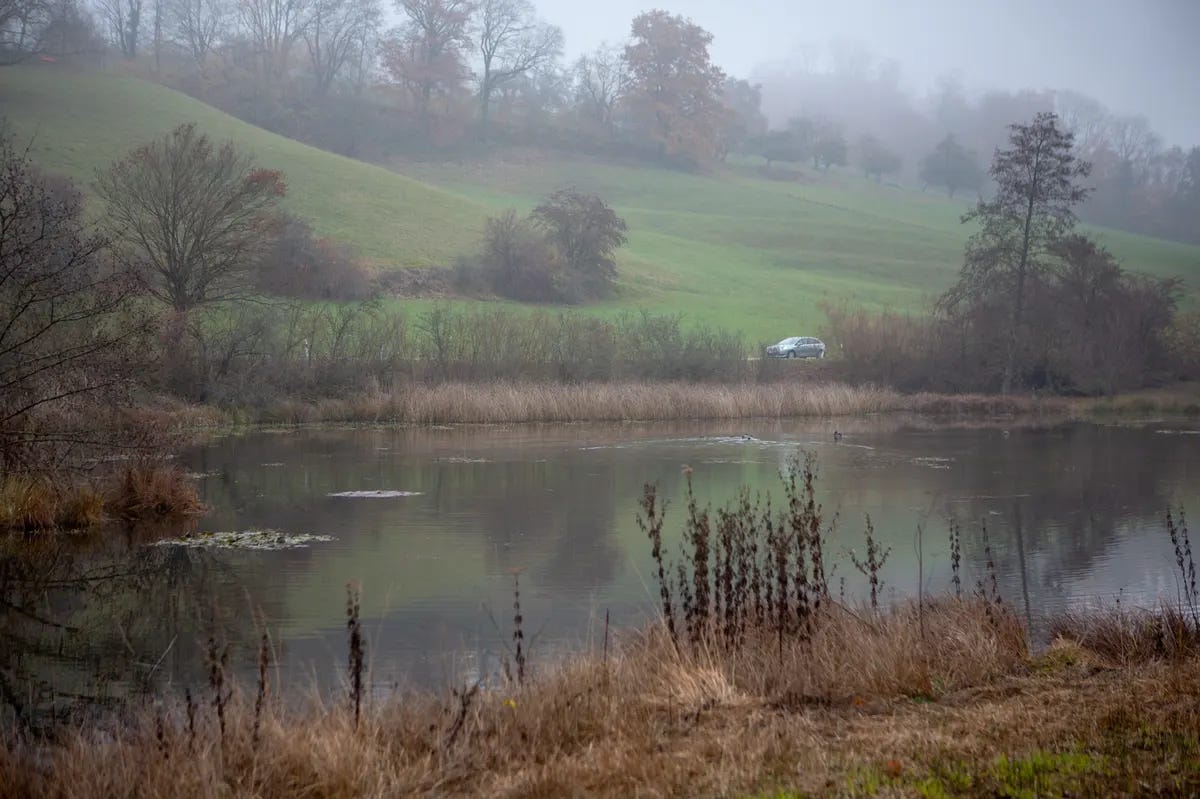The end of a road (hopefully)
For nature to recover it needs more connectivity, not more isolated reserves. There are way, way too many roads that are effectively fences for nature. But a road, once built, will only rarely vanish.
We are far, far away from anything resembling E. O. Wilson’s Half-Earth vision - but we could leap forward if we were to systematically tackle the spiderweb of roads that cuts Earth’s nature into countless separate bits. I’ve written about traffication before, and will lay out a concrete idea in a next post - but to illustrate just how difficult the removal of one single road is, I’d like to here share the story of the Eigental road.
The Eigental is small valley ten minutes from my home. It holds a nature reserve (since 1967) that is rich with marshes and ponds, that is home to rare orchids, and a paradise for amphibians and birds. What also goes straight through this valley is, of course, a road. Concerned for the thousands of migrating frogs every spring, the neighboring villages agreed back in 2000 to close the road every night during the months of February to April.
Even this nightly closure took tremendous effort. Organizers had been told that, politically, this would never go through. It did, but only after having to deal with outraged people who clearly perceived the nightly closure of the road as an incredibly unfair inconvenience to them (it was minor at most).
In 2013, something fortuitous happened - potholes!
Because of a number of large potholes caused by ice, the Eigental road had to be completely closed. A wrangling over costs and budgets ensued as three municipalities were part owners of that road. And so the potholes remained and only three years later those responsible came to a decision that the road should be fixed and that, ten years later (which will be the 2nd of August, 2027) the road would forever close for motorized traffic.
Thousands of people signed a petition to oppose the eventual closure. Those interested in protecting nature were able to get some concessions - the nightly spring closure would remain to protect amphibians, plus another nightly closure in October and November; in addition the road would be entirely closed for June and July to protect roaming young animals born in spring; and it was definitely closed for trucks.
Those in charge of the compromise knew that they had actually won ten years - ten years of essentially continued traffic and ten years to figure out a way to go back on the agreement and to continue to keep it open in perpetuity. After the decision that involved everyone, there was silence. No opposition. It was accepted, it was done. But, expectedly, a few years ago opposition started ramping up. Currently, alliances are coming together force a new look at the closure - to question everything - and to keep it permanently open. The flimsy arguments are:
A great deal’s already being done for nature and that’s enough. To do anything more, like a total closure of ‘this important road’ would be a ‘disproportionate measure’.
Completely closing the Eigental road would lead to more traffic elsewhere and through villages, and that would be burdensome and unacceptable for villagers.
The science that argued for closure is outdated and everything needs to be looked at anew. Traffic these days causes far less harm.
No one who is part of this alliance apparently is equally interested in what is burdensome and unacceptable for nature’s many other species - or has tried to learn about light pollution, noise pollution and plastic particles pollution. The arguments, in the end, are a smokescreen. What lies at the bottom of the opposition is simply that the road has always been a convenient connection between two villages and what has been, shall always be. Change, per se, is something our species is far from fond of - but try to take comfort and convenience from us? That means war!
To bring this home - the Eigental, this wondrous little valley, is a mere three kilometers long. For those who travel this road from the village on one end to the village on the other end it means a drive of less than five minutes. When the road is closed for good, it will mean a drive, depending on the chosen route, of ten minutes or more.
For that minor adjustment you’d have a nature reserve that is safe from traffic noise, traffic pollution and traffic-induced roadkill. You’d also have a nature reserve that would become a boon for municipalities as more visitors would come (hiking and bicycling will be allowed) to enjoy nature. It would be win for people (physical and mental health), a win for nature (for all the obvious reasons) and a win for municipalities (economic benefits). There’s all of that one side, and the intransigent folks on the other. Are they willfully ignorant? I don’t know. But what is obvious that they value their convenience far above the nature they claim to love.
Cheers,
If you enjoy the Rewilder Weekly …
… please consider supporting my work. Your paid subscription will help generate the funds needed to realize a unique rewilding book I’m working on. And, of course, that paid subscription also ensures that the Rewilder Weekly will always keep going for those who cannot afford to pay. A thousand thanks!


